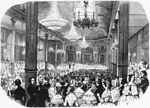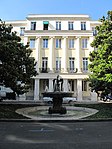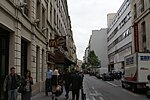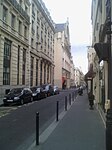Notre-Dame-de-Lorette (Paris Métro)

Notre-Dame-de-Lorette (French pronunciation: [nɔtʁə dam də lɔʁɛt]) is a station on Line 12 of the Paris Métro in the 9th arrondissement. The station opened on 5 November 1910 as part of the original section of the Nord-Sud company's line A between Porte de Versailles and Notre-Dame-de-Lorette. It was the northern terminus of the line until its extension to Pigalle on 8 April 1911. On 27 March 1931 line A became line 12 of the Métro. The station is named after the nearby church Notre-Dame-de-Lorette. The name of the church refers to the Italian city of Loreto and its Chiesa della Casa Santa (Church of the Holy House), a centre of Marianism. The station is located within a short walking distance from Le Peletier station on line 7, but no free transfer is permitted.
Excerpt from the Wikipedia article Notre-Dame-de-Lorette (Paris Métro) (License: CC BY-SA 3.0, Authors, Images).Notre-Dame-de-Lorette (Paris Métro)
Rue de Châteaudun, Paris 9th Arrondissement (Paris)
Geographical coordinates (GPS) Address Nearby Places Show on map
Geographical coordinates (GPS)
| Latitude | Longitude |
|---|---|
| N 48.87604 ° | E 2.337341 ° |
Address
Librairie Saint-Paul
Rue de Châteaudun
75009 Paris, 9th Arrondissement (Paris)
Ile-de-France, France
Open on Google Maps










